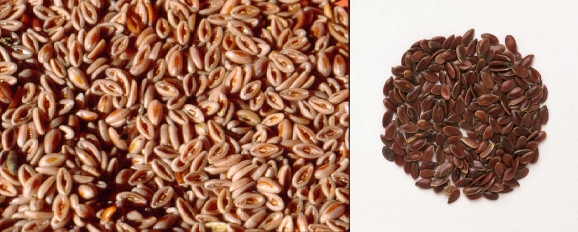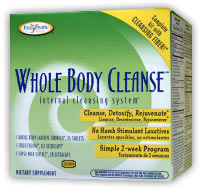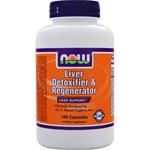New Year Detox Guide Part Two – Detox Product Guide

You do need exercise and fresh air, gas masks are optional.
In Part One of AllStarHealth.com’s New Year Detox Guide, we laid down the basic principles of detoxification. As we said near the beginning of that article, there’s no universally agreed-upon definition of or approach to detoxification, and the range of options and opinions runs the gamut from legitimate and useful to outright scam.
The BBC picked up on this theme with a story, but their headline is misleading when it says “Scientists debunk ‘detox myth”. It’s misleading because there really IS no one ‘detox myth.’ There is disagreement and misinformation about what toxins are, how the body handles them, and the role nutrients or other products can play. Instead, there are hundreds of competing (and overlapping) schools-of-thought, theories, books, websites and products that claim to detox. Are they all legitimate? No, but the question should be are any of them legitimate, and as long as we stick to a reasonble and limited definition of detoxification, there certainly are products and approaches that can help.

Some of the worst environmental toxins are the ones you can’t see.
What we can reasonably expect these products or approaches to do is enhance one or more of the body’s built-in detoxification or waste-elimination pathways. That’s it. As we discussed in Part One, these major pathways are the liver, kidneys, lymphatic system, gastrointestinal tract and skin. Chelation is a specific type of detoxification for non-nutritive minerals and metals. Now let’s look at each pathway and talk about some products or approaches that can help.
Liver
As it should be, the liver is the focus of most detox protocols since the liver is the body’s primary organ of detoxification. The liver is able to handle an extremely wide range of wastes and toxins, through many different mechanisms. A few supplement ingredients in particular have been shown to support liver health. Most of these nutrients are either antioxidants themselves or support the production of other antioxidants, since many wastes and toxins are harmful precisely because of their free-radical oxidation promoting properties.
Milk thistle: Is by far the most common ingredient for liver detox. Milk thistle is used by itself, and is a key ingredient in many liver formulas and detox kits. With any of these, try to use a milk thistle extract, selecting for the highest concentration of silibinin and silymarin, the herb’s most active ingredients. Other herbs used for liver cleansing include dandelion, turmeric/curcumin, and artichoke extract. Take these products as directed.

Popular liver-support herbs include (L-R) dandelion, milk thistle and turmeric.
Alpha lipoic-acid: Alpha lipoic acid or ALA is both a powerful antioxidant and a precursor for one of the liver’s most powerful antioxidant and ‘detox’ enzymes, glutathione peroxidase. Like milk thistle, alpha lipoic acid is used as a stand alone supplement and in combination with other nutrients. Glutathione supplements are also used.
N-acetyl-cysteine or L-cysteine: These amino acid compounds are also glutathione precursors along with alpha lipoic acid.
Selenium: The trace mineral selenium is also essential for glutathione production, but not many people take selenium as a standalone supplement. Instead, they probably get it from their multi, a multimineral, or a multi-ingredient liver cleanse or detox formulas.
SAMe: Although its most popular uses are as a mood elevator and heart health supplement, SAMe is also a powerful liver detoxification agent by virtue of its support for methylation reactions. Methylation reactions are central to many liver detox functions; SAMe acts as a methyl donor (contributes a chemical fraction called a methyl group) to support these reactions. Always take SAMe with a B complex or a multi, but not at the same time; you’ll want to take the SAMe on an empty stomach and the B or multi with solid food.

Sure, it’s great for your mood and for joint health, but SAMe is an overlooked liver detox supplement, too.
Liver Cleanses: These are much more popular than using standalone nutrients, and usually include all or most of these ingredients anyway. Most of the top supplement brands make a good liver formula, including NOW Foods, Liverite and Solaray.
In terms of non product-oriented approaches to liver health, it only makes sense to reduce the liver’s burden whenever you’re using products like these. That means eliminate or minimize alcohol, drugs, smoking and OTC medications whenever possible. At this time, you’d also want to “eat clean” and avoid processed or junk foods and drinks as much as possible.
Kidneys
As we discussed in Part One, the kidneys are involved in processing many water-soluble toxins and wastes. But since the kidneys can’t store wastes to a significant degree, there shouldn’t be anything lingering in the kidneys TO cleanse. Drinking enough clean water, 1-3 liters per day, and getting all your nutritional bases covered with a multi and an omega-3 supplement is sufficient to support the kidneys in doing their job. However, the kidneys must process many OTC and prescription drugs, as well as harmful compounds people are exposed to occupationally. So, when trying to support your kidney health in this regard, you want to minimize your exposure to both of these as much as possible.
Gastrointestinal Tract
Your gastrointestinal tract is where food and waste material are separated. The ‘cleaner’ your diet and the more whole, high-fiber foods you consume, the better this process works, and vice-versa.
Needless to say, most people contemplating a cleanse or a detox program haven’t been eating so well. And most people who eat very clean diets don’t really need to. But both types of people will sometimes have reason to believe they can benefit from a GI cleanse or detox. Some fast, or eat a very simple, healthy diet prior to or in conjunction with their program. In any case the products and ingredients to support this process fall into 4 categories; fiber, laxatives, fiber and laxative combinations and miscellaneous nutrients that soothe or tone the bowel.
Fiber is the most important of these. The two primary types of fiber, soluble and insoluble, have complimentary benefits and virtually all fiber supplements are a mixture of both types. Insoluble fiber adds bulk which helps scour the colon walls of waste material. Soluble fiber is able to absorb moisture which facilitates the passage of a healthy stool. Very few people obtain the minimum 25 grams of fiber daily, fewer obtain more than that. Virtually everyone will get a good result from a few days use of a good fiber supplement, especially if they’re pairing it with a healthy whole-food diet.
Psyllium seed husk is by far the most popular type of fiber supplement, available in powder, and capsule forms. It’s a perfect blend of soluble and insoluble fiber and works great for most people. Less popular for this purpose but also effective is flax seed meal. Use these products as directed.

Fiber supplements help eliminate waste from the GI tract. Two popular kinds are made from the ground husks of psyllium seed (left) and ground whole flax seeds (right).
Laxative ingredients: Laxatives are often used on a strictly-limited basis to temporarily stimulate bowel function and elimination. Most herbal laxative ingredients like cascara sagrada, senna leaf, and aloe work by irritating the colon and/or intestinal walls, inducing peristaltic contractions as the system tries to rid itself of the irritant. Magnesium oxide works by bringing water into the bowel. Either approach works great in the short term, especially after traveling or convalescing when bowel habits are disrupted. But never use laxative ingredients long-term or on a regular basis since they VERY quickly become habit-forming, leaving the user no option but to endure a few days of discomfort while the body readjusts to the much subtler and natural stimulus of a healthy, bulky stool.
Fiber and laxative combinations: Fiber and laxative combinations include ingredients like those just described, often with other supporting nutrients. Fiber and laxative combinations are what do all the heavy lifting in most whole-body detox and cleanse kits.

A popular whole-body cleanse kit made without harsh laxatives.
Miscellaneous ingredients: The Ayurvedic herb compound Triphala is sometimes used to reinvigorate bowel function after a bout of constipation or when weaning oneself off of harsher laxative ingredients. Charcoal tablets are used to help absorb impurities that may cause or lead to food poisoning or excessive gas. Finally, probiotic supplements help to restore a healthy population of friendly bacteria, many of which play a direct or indirect role in helping the body reduce or eliminate wastes and toxins.
Lymphatic system
As discussed in Pat One, the lymphatic system is a major waste-disposal pathway in the body. The lymphatic system drains away wastes from the digestive tract and the rest of the body. The fluid surrounding each cell in the body drains away and accumulate those wastes into a liquid called lymph, which is conducted back towards the heart via lymph vessels, which are very similar to veins. Along the way, lymph vessels transit through mesh like structures called lymph nodes. Immune cells called lymphocytes are concentrated in lymph nodes, where they pre-clean lymph by engulfing and digesting debris and waste. Lymph is eventually mixed back into blood, just before blood returns to the heart from its journey around the body. From there, lymph-borne toxins are handled by the liver.
There aren’t many nutrients we can use to affect the lymphatic system from a detoxification standpoint. Glutamine is the preferred fuel source for lymphocytes, so that’s one option. Butcher’s broom and horsechestnut extract may booth increase lymphatic circulation, which is desirable in most cases. But lymphatic circulation is entirely cut off from the pumping force of the heart. Muscular contraction (i.e. exercise), gravity and circulatory massage are the only factors that can affect lymph drainage and flow. This, by the way, is one of the reasons why exercise is a requirement for health, and not just a lifestyle choice.

Butcher’s broom (left) and Horse chestnut (right) extracts are both used to promote movement of lymphatic fluid.
Skin
The skin plays only a minor role in detoxification relative to these other systems, and this is primarily through waste materials in perspiration. There aren’t any supplements that increase or enhance the skin’s function in this regard, however, certain sudorific nutrients (caffeine, green tea extract, ephedrine) can induce or increase perspiration. But because these are stimulants, exercise or physically warming the body (i.e. sauna) are preferable, being both safe and effective ways for most people.
Chelation
Chelation is a process that involves binding a mineral or metal to another compound – usually an amino acid – to promote its absorption or elimination. Alpha lipoic acid, MSM and EDTA are all known to be chelating agents, but by far the most common OTC chelating agent is EDTA. EDTA is a synthetic amino acid widely used in industry and medicine for its potent chelating properties. Chelation may have important role to play in heart health, as minerals like calcium are incorporated into the most common type of arterial plaque. Supplements that incorporate EDTA with this in mind include Cardio Chelate by MRM.
Summary
- Detoxification, cleansing, toxins, are all areas of controversy; there is no medically or scientifically-accepted definition of any of these, and there will probably never be one. Yet there can be significant benefits when people use certain nutrients and lifestyle changes to enhance their body’s inherent detoxification pathways; simply focus on a specific pathway(s), then select a product or an approach to use.
- The body’s major pathways are the liver, kidneys, GI tract, lymphatic system and skin.
- Regardless of what pathway you’re working with, clean up your diet and eliminate as much non-nutritive factors as you can: junk foods, sugar, alcohol, smoking, drugs and non-essential meds.
- Evaluate the success or necessity of your program with an honest self-assessment of your mental and physical health both before and after your program. Pay particular attention to energy levels, state of mind, skin condition, eye condition, elimination, and your overall well-being. Most people experience improvements in one or more of these areas when completing a detox program, however simple or elaborate.
Questions or comments about this article? Please direct them to mtaylor@allstarhealth.com.
- Posted in Miscellaneous
- No Comments





